In New Zealand’s stunning coastal cities of Tauranga and Mt Maunganui, where temperatures can fluctuate and comfort is essential, the need to install efficient heating and cooling solutions cannot be overstated. Creating the perfect indoor environment relies heavily on the installation of reliable heat pump systems, and one name stands out in the sector of innovation and performance – Mitsubishi Electric.
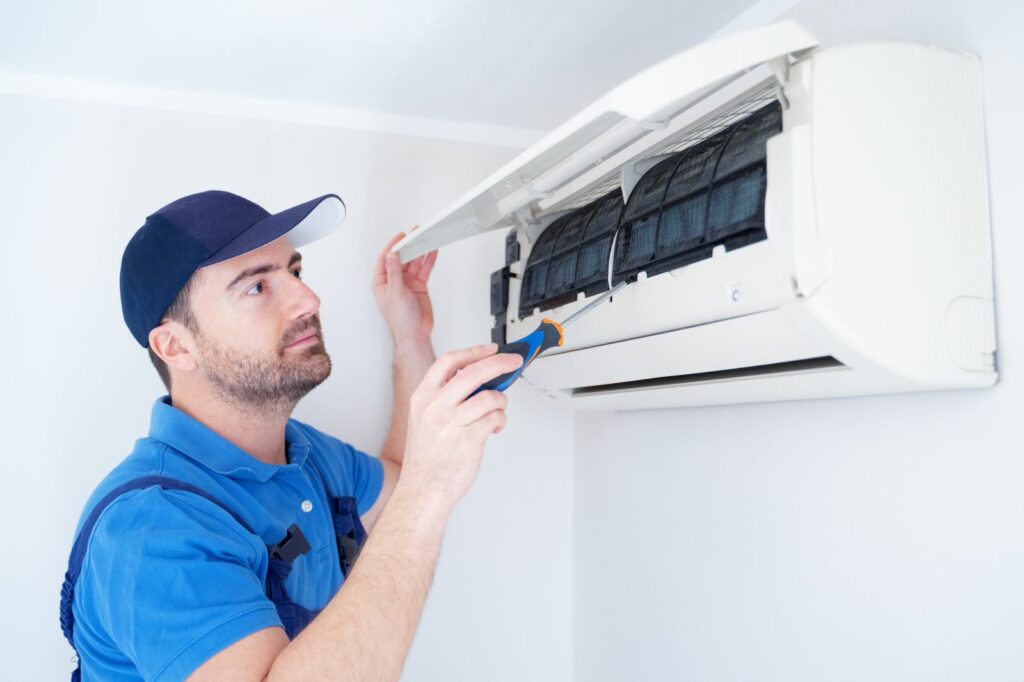
Mitsubishi Electric, a name synonymous with cutting-edge technology and unwavering quality, has positioned itself as a trailblazer in the world of heating and cooling solutions. Mitsubishi’s commitment to excellence extends beyond mere functionality; it encompasses a dedication to delivering comfort that transcends seasons.
With Tauranga and Mt Maunganui’s unique climate in mind, where summers can be warm and humid, and winters bring a touch of chilliness, the role of a proficient Mitsubishi heat pump becomes central to creating a harmonious living or working space.
Understanding Mitsubishi Heat Pumps
In the sector of heat pumps, Mitsubishi Electric has established itself as a frontrunner, renowned for a trifecta of qualities that set its products apart – energy efficiency, advanced technology, and unwavering durability.
Energy Efficiency:
At the heart of Mitsubishi’s heat pumps lies a commitment to energy efficiency, a factor that is essential in the modern era. Mitsubishi Electric’s heat pumps are engineered with cutting-edge technologies to maximise energy utilisation, translating into lower energy bills for users in Tauranga and Mt Maunganui.
The utilisation of inverter-driven compressors ensures precise control over the heating and cooling processes, adapting seamlessly to the required temperature without unnecessary energy consumption.
Advanced Technology:
Mitsubishi’s reputation for technological innovation is exemplified in its heat pump offerings. The integration of advanced features such as Hyper-Heating INVERTER® technology allows these systems to operate efficiently even in sub-zero temperatures, a particularly relevant feature for Tauranga’s occasional chilly spells.
The incorporation of smart technology, including programmable thermostats and remote control options, empowers users to tailor their indoor climate with unparalleled convenience.
Durability:
Durability is a cornerstone of Mitsubishi Electric’s design. The heat pumps are crafted using high-quality materials, ensuring longevity and robust performance. The units undergo rigorous testing to withstand the rigours of varied climates, providing Tauranga residents with a reliable heating and cooling solution that stands the test of time.
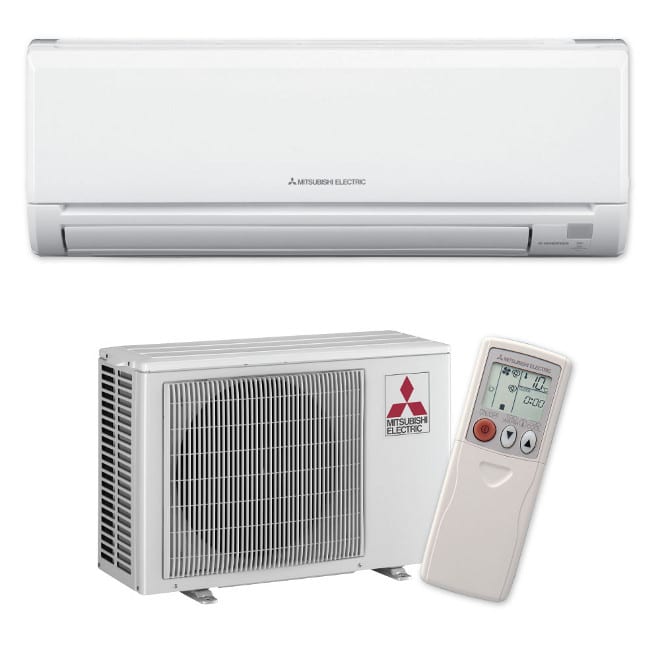
Benefits of Choosing Mitsubishi:
Opting for a Mitsubishi heat pump in Tauranga and Mt Maunganui extends beyond the product features; it’s a strategic choice for reliability and peace of mind. Mitsubishi Electric, a trusted brand globally, has consistently delivered superior heating and cooling solutions.
With a Mitsubishi heat pump, users gain access to a product backed by a legacy of innovation and a commitment to customer satisfaction.
The assurance of longevity, energy savings, and advanced technology make Mitsubishi Electric a compelling choice for those seeking a trustworthy and efficient heating and cooling solution in Tauranga’s ever-changing climate.
Pre-Installation Preparation
A thorough site assessment is a crucial initial step before installing a Mitsubishi heat pump in Tauranga and Mt Maunganui. This preparatory phase lays the foundation for optimal performance and longevity of the heating and cooling system.
Thorough Site Assessment
A comprehensive site assessment is akin to a diagnostic check-up for your future comfort system. Professionals and DIY enthusiasts alike must conduct a thorough evaluation of the installation site. Factors such as the layout of the space, prevailing insulation conditions, and potential obstructions must be carefully considered.
This assessment not only ensures the seamless integration of the heat pump but also aids in identifying potential challenges that may impact its efficiency.
Assessing Suitable Location
Selecting the most suitable location for your Mitsubishi heat pump is a critical decision that directly influences its overall performance. The chosen spot should allow for unobstructed airflow and efficient heat exchange.
Ideally, the outdoor unit should be placed in an area with enough ventilation, free from debris or vegetation that could impede airflow. Additionally, the indoor unit’s placement should be strategic, considering the layout of the room to ensure uniform heating or cooling distribution.
Choosing the Right Capacity
When it comes to heat pumps, one size does not fit all. Selecting the right capacity is essential for achieving optimal efficiency. Mitsubishi Electric offers a range of heat pump capacities, and it’s imperative to match the system’s output to the size of the space it intends to serve.
Oversized units may lead to frequent cycling and increased energy consumption, while undersized units may struggle to meet the area’s heating or cooling demands.
A careful calculation, taking into account factors like insulation and local climate conditions in Tauranga, ensures the chosen capacity aligns perfectly with the space’s requirements.
Installation Process
The installation of a Mitsubishi heat pump is a precise and methodical process, ensuring that each component is seamlessly integrated for optimum performance. Let’s examine the step-by-step installation guide, providing insights into the mounting, electrical connections, refrigerant line installation, and other critical aspects.
1. Mounting the Units:
The installation process commences with mounting the indoor and outdoor units. The indoor unit, often referred to as the evaporator, is strategically placed within the living or working space, considering factors such as airflow, aesthetics, and accessibility for maintenance. Simultaneously, the outdoor unit, or condenser, is securely mounted in an area with sufficient ventilation, ensuring optimal heat exchange.
2. Electrical Connections:
Proficient electrical connections are integral to the reliable functioning of a Mitsubishi heat pump. As certified electricians, we are recommended to handle the wiring, ensuring compliance with local regulations and safety standards.
The electrical components, including the power supply, control wiring, and interconnecting cables, are comprehensively connected to guarantee a seamless integration with the existing electrical system.
3. Refrigerant Line Installation:
The refrigerant lines, responsible for the transfer of heat between the indoor and outdoor units, demand careful attention during installation. Proper sizing, insulation, and routing are crucial for efficient heat exchange.
Our technicians will ensure that the refrigerant lines are securely connected and any potential leaks are promptly addressed to maintain the system’s integrity.
Tips for Level Installation:
Ensuring a level installation is not just about aesthetics; it directly impacts the heat pump’s performance. A level mounting prevents stress on internal components, promoting longevity and efficient operation. As professionals, we use levelling tools during installation to guarantee that both indoor and outdoor units are positioned correctly.
Importance of Proper Insulation
Proper insulation is essential for energy efficiency in Mitsubishi heat pump installations. Insulating refrigerant lines prevents heat loss during the transfer process, ensuring that the system operates at its designated efficiency levels.
Adequate insulation also minimises the risk of condensation, preserving the integrity of the components over time.
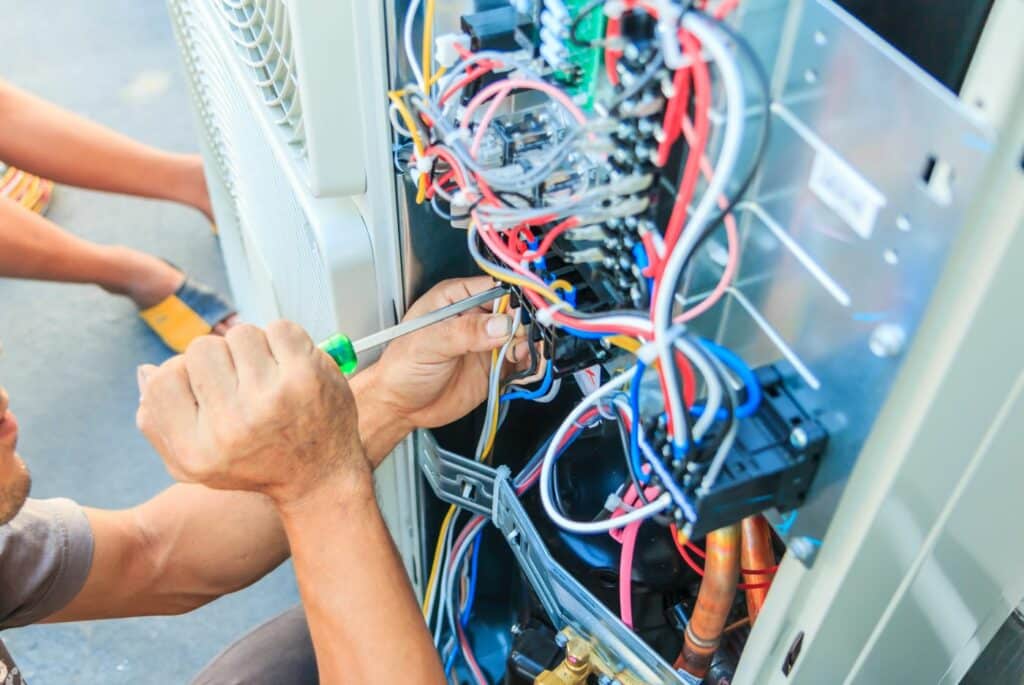
Electrical Connection Guidelines
The electrical connection of Mitsubishi heat pumps demands precision to ensure safe and efficient operation. Understanding the electrical requirements is essential for seamless integration into Tauranga and Mt Maunganui homes and businesses.
Electrical Requirements:
Mitsubishi heat pumps operate within specific electrical parameters outlined by the manufacturer. It is imperative to check the product specifications to ascertain the voltage, frequency, and current requirements.
These details guide the selection of compatible electrical components and contribute to the system’s longevity and performance.
Proper Wiring and Voltage:
Correct wiring is vital for the safe functioning of a Mitsubishi heat pump. Ensure that the wiring complies with local electrical codes and regulations. The voltage supplied to the heat pump must align with the manufacturer’s specifications, preventing potential damage to the unit and ensuring consistent and reliable operation.
Circuit Breaker Specifications:
Installing an appropriately sized circuit breaker is a critical safety measure. The circuit breaker protects the electrical system and the heat pump from overloads, short circuits, and other electrical faults.
Refer to the manufacturer’s guidelines to determine the recommended circuit breaker specifications and ensure compliance with local electrical codes.
Certified Electrician:
The importance of hiring a certified electrician for Mitsubishi heat pump electrical connections cannot be overstated. As Certified professionals, our team at Goldstar possess the knowledge and expertise to handle the intricacies of electrical work, ensuring that the installation meets safety standards and regulatory requirements.
This not only safeguards the warranty of the heat pump but also provides peace of mind to Tauranga and Mt Maunganui residents, knowing that the electrical connections are in capable hands.
Refrigerant Line Installation
Proper refrigerant line installation is a vital aspect of ensuring the efficiency and longevity of Mitsubishi heat pumps. The refrigerant lines connecting the indoor and outdoor units play a crucial role in the heat exchange process. It is essential to adhere to guidelines for sizing, insulation, and protection.
Significance of Proper Installation:
Efficient heat exchange relies heavily on the correct installation of refrigerant lines. Properly sized lines ensure the right amount of refrigerant flows through the system, optimising performance and energy efficiency.
Additionally, insulation prevents heat loss during the transfer process, maintaining the desired temperature levels in the most energy-efficient manner.
Guidelines for Refrigerant Line Installation:
When installing refrigerant lines for Mitsubishi heat pumps, consider factors such as line sizing, insulation thickness, and protection from physical damage. Follow manufacturer specifications for sizing to prevent issues like inadequate cooling or excessive strain on the compressor.
Proper insulation, often overlooked, minimises heat loss and prevents condensation, safeguarding the integrity of the system.
Considerations for Tauranga’s Climate:
In Tauranga and Mt Maunganui’s mild coastal climate, the impact of temperature and humidity levels on refrigerant lines is moderate. However, as professionals, we are mindful of potential corrosion due to the salty air near the coast. Employing corrosion-resistant materials and regular inspections can mitigate this concern.
Testing and Commissioning
Thorough testing is indispensable before finalising the installation. This includes checking for refrigerant leaks, assessing airflow, and evaluating overall system performance. Testing ensures that the Mitsubishi heat pump operates as intended, identifying and rectifying any issues before they impact efficiency.
Guidance on Checking Performance:
Readers are advised to conduct a systematic check for refrigerant leaks, ensuring that the system is sealed and efficient. Evaluating airflow in both the indoor and outdoor units guarantees optimal heat exchange. Comprehensive testing not only verifies proper installation but also prevents potential future malfunctions.
Necessity of Commissioning:
Commissioning, the final step in the installation process, involves fine-tuning the system for peak efficiency. As certified technicians, we will adjust settings, verify controls, and confirm that the Mitsubishi heat pump operates within specified parameters.
Commissioning is essential to unlocking the system’s full potential and ensuring long-term performance.
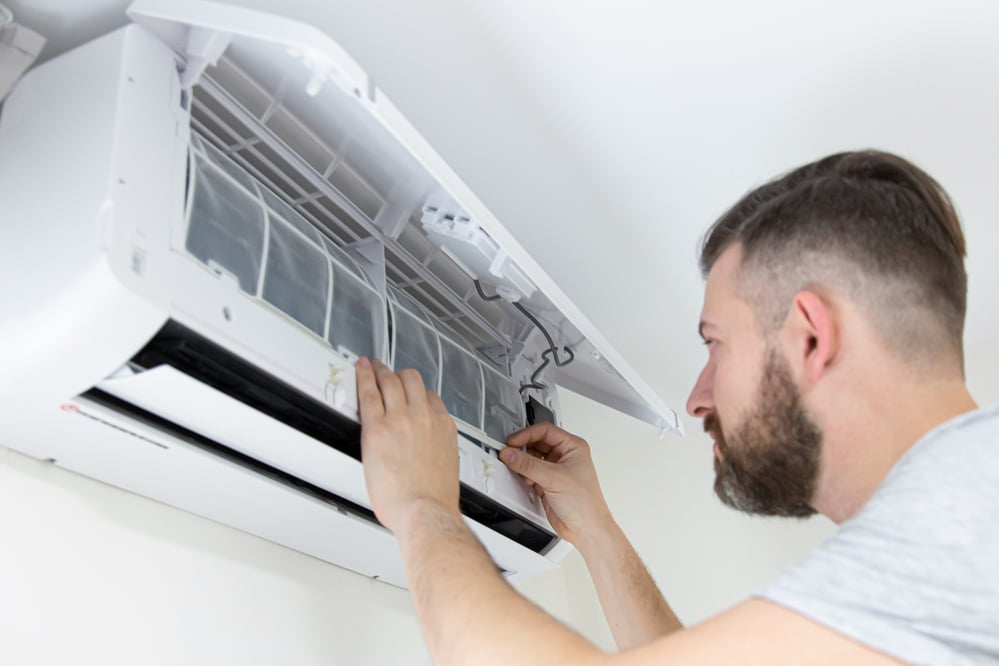
Regular Maintenance Tips
Regular maintenance is key to extending the life of Mitsubishi heat pumps. Tauranga and Mt Maunganui residents should prioritise tasks such as cleaning the units, checking and replacing filters, and scheduling professional inspections. Routine maintenance not only enhances efficiency but also prevents potential issues.
Importance of Cleaning and Filter Checks
Cleaning the outdoor and indoor units from debris and dust is vital for unhindered airflow. Regularly checking and replacing filters ensures optimal performance and prevents strain on the system.
Tauranga and Mt Maunganui’s coastal environment may lead to faster accumulation of dust, underscoring the importance of vigilant cleaning.
Guidance on Troubleshooting
Equipping users with troubleshooting skills is crucial for addressing common issues promptly. Guidance on identifying and resolving issues like reduced airflow, unusual noises, or fluctuations in temperature empowers users to take proactive measures and seek professional assistance when needed.
Compliance and Regulations
Before undertaking a Mitsubishi heat pump installation in Tauranga and Mt Maunganui. It is imperative to be well-versed in local regulations and compliance standards. Familiarise yourself with specific requirements regarding electrical work, refrigerant handling, and installation permits.
Adhering to these regulations ensures both safety and compliance.
Emphasis on Permits and Safety Guidelines
Highlight the importance of obtaining necessary permits for heat pump installations. Stress the significance of adherence to safety guidelines, not only for the well-being of the installer but also for the longevity and performance of the Mitsubishi heat pump. Compliance with regulations is a testament to the professionalism and responsible installation practices in Tauranga and Mt Maunganui.
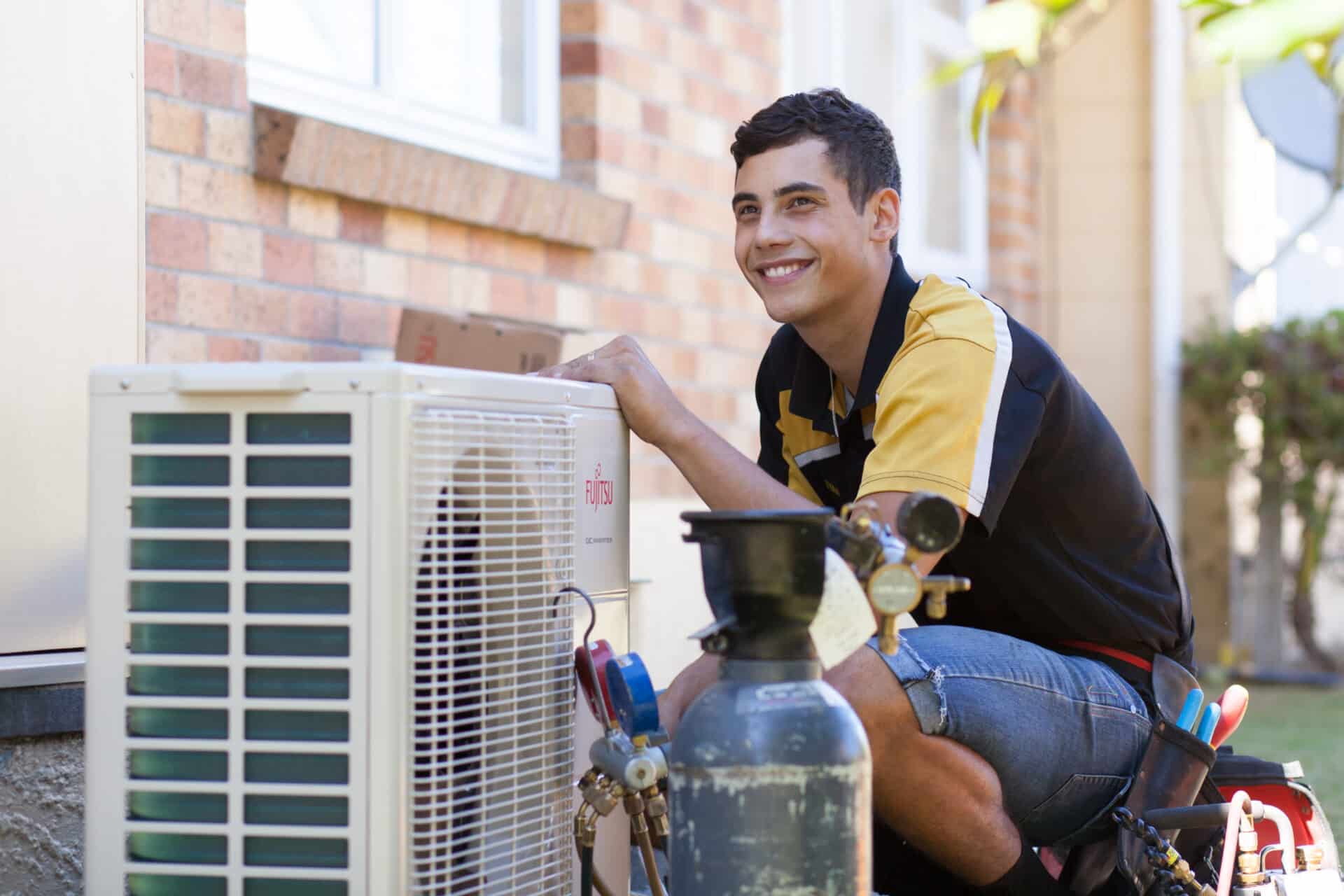
The Essence of Professional Expertise
Opting for Goldstar Heat Pumps’ professional expertise to install your Mitsubishi heat pumps in Tauranga and Mt Maunganui is not only a prudent choice but also a necessity for optimal performance and longevity.
Our experienced professionals bring a level of precision to the site assessment that goes beyond the surface, ensuring every aspect of the installation is tailored to the unique characteristics of the space.
Our familiarity with local regulations guarantees a compliant and safe installation, covering crucial aspects like electrical connections and refrigerant handling. Beyond compliance, our certified electricians provide the technical proficiency required for intricate tasks such as wiring, voltage alignment, and circuit breaker specifications.
Our expertise extends to foreseeing and addressing potential challenges. Whether related to Tauranga and Mt Maunganui’s coastal climate or specific spatial constraints.
As professional installers, we also play a crucial role in thorough testing and commissioning. As well as fine-tuning the system for optimal efficiency and safeguarding the Mitsubishi heat pump’s warranty.
In the end, seeking professional assistance from Goldstar not only ensures a seamlessly integrated and efficient system. But also provides Tauranga and Mt Maunganui residents with the peace of mind that their investment is in capable hands.
Contact us today for a free in-home consultation.
We’ll help you choose the best heat pump to suit your needs and budget from the vast range we have available. Plus, we will provide you with a written quote and expert advice with absolutely no obligation.
We provide and install heat pumps in Tauranga, Mt Maunganui as well as Hamilton and the Waikato.

